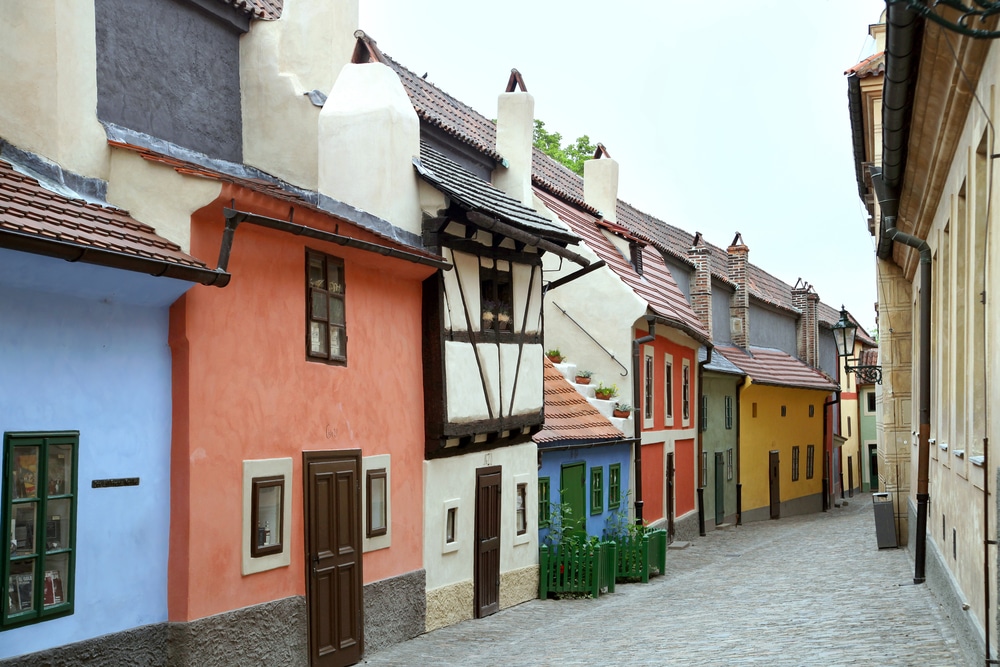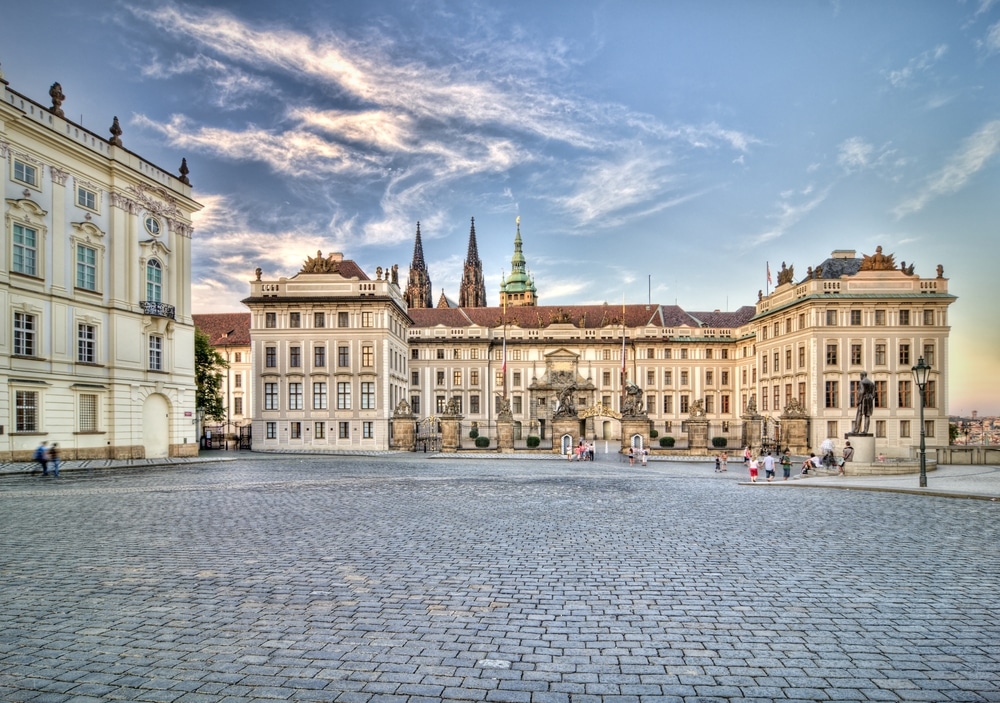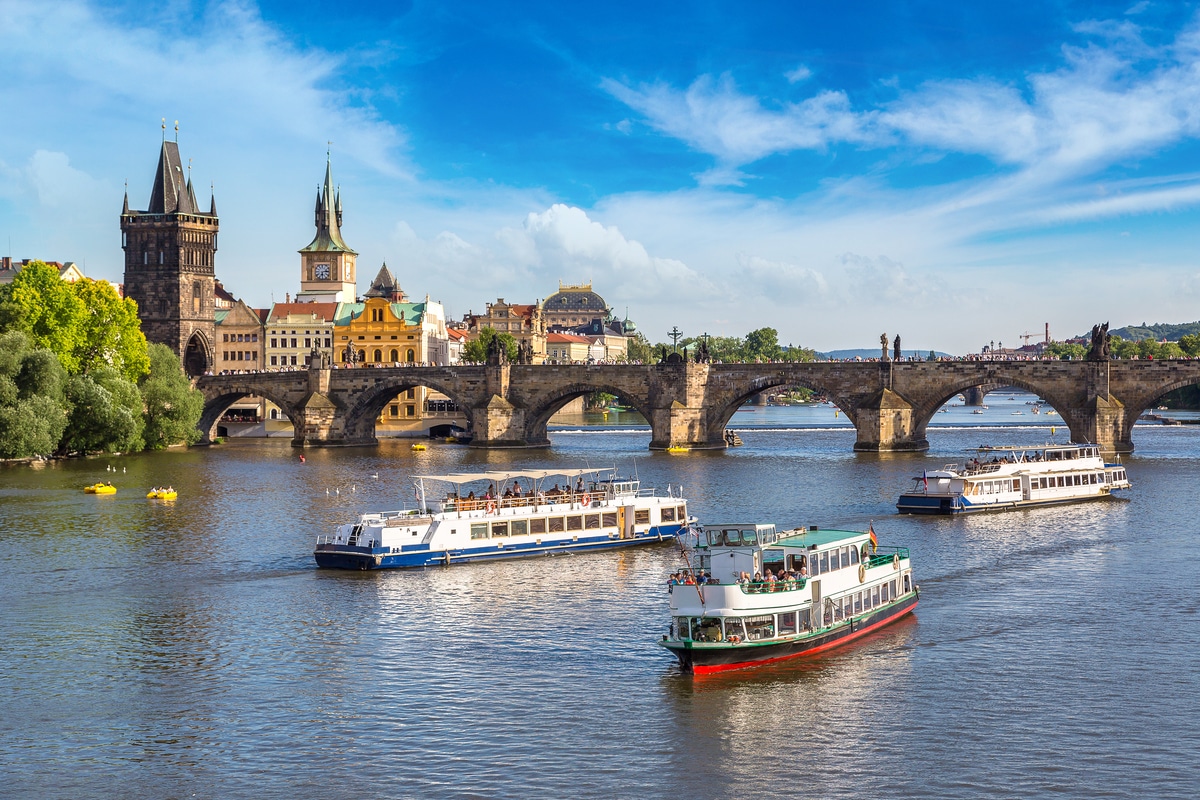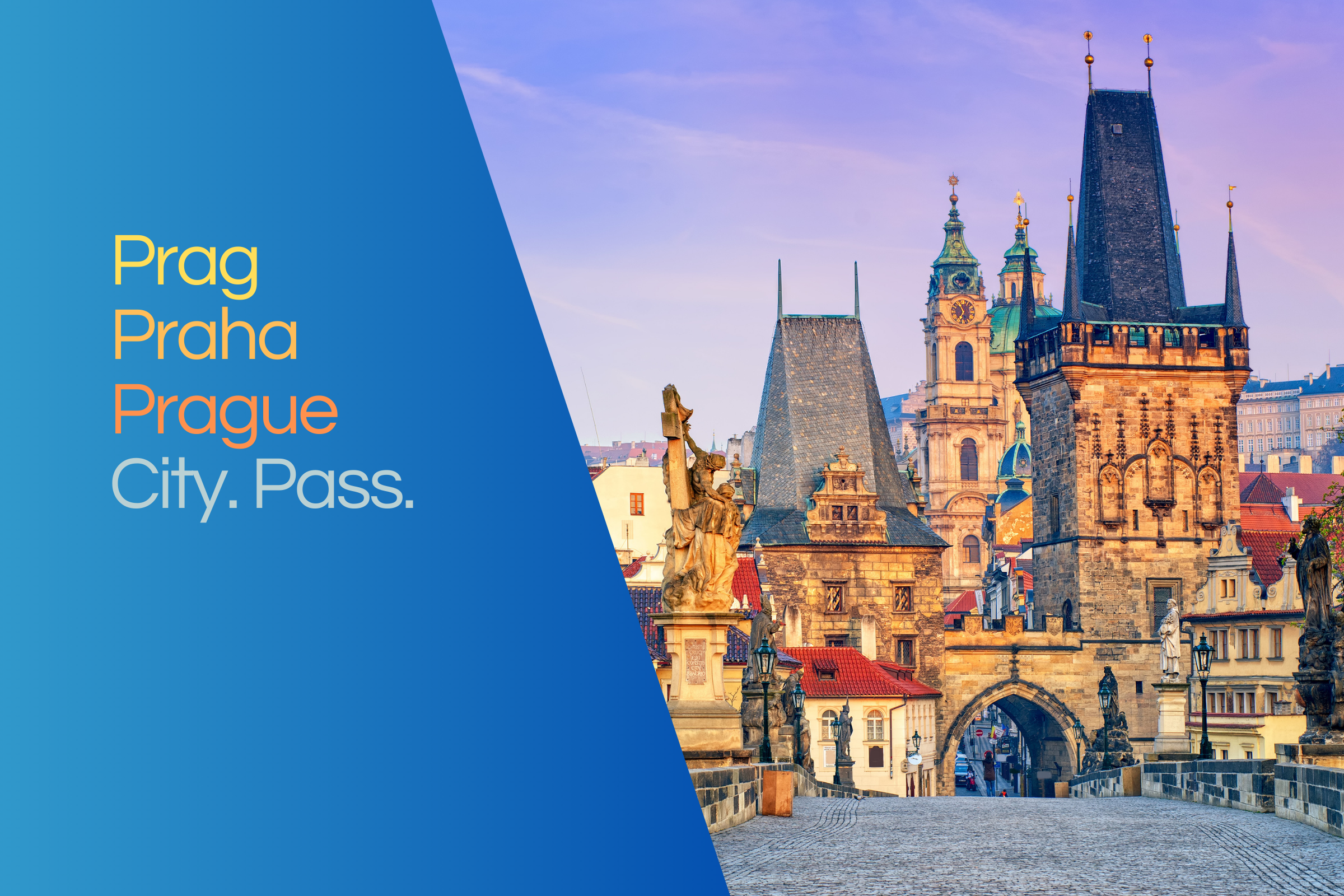- Home ›
- Czech Republic ›
- Prague
Golden Lane
Prague is always worth a visit and beautiful at any time of year . But there are corners of Prague that can be scary even in the brightest spring sunshine. Not for everyone, certainly. But some people sense that something is different there. One of them is the Golden Lane, located on the hill of Prague Castle, accessible by metro to Malostranska and Hradcanska stations. From there you climb up to the castle on foot via various paths.

In the shadow of the Cathedral, behind St. George's and hidden around a few corners, an alley led along the bulwark wall of Prague Castle as early as the Middle Ages. Where large arcades had supported a covered battlements, accommodation for the "red guard" was built under Rudolf II. (1552-1612), accommodation was built for the members of the castle guard, known as the "Red Riflemen", and later for craftsmen, who were kept out of the reach of the Prague guilds. These included the goldsmiths, after whom the alley was named. And the alchemists.
Rudolf II was not only convinced that alchemy could be used to produce gold and find the philosopher's stone, but he himself was an alchemist... He was attracted by the occult and the mysterious. Whether his chemists, doctors and philosophers actually had anything to do with the Golden Lane is rather doubtful. After all, Rudolf II provided a large laboratory on the castle hill.
Since there was not enough space in the narrow rooms, small houses had long since been added in front of the bulwark wall into the alley. Between the castle wall and the burgrave's palace, however, the confinement was still great and the stench increased considerably. But the attraction of the place remained unbroken. In the 20th century the bohemians, artists and writers were drawn here. It is said that Franz Kafka lived for a time in house No. 22, not far from the fortune-teller Matylda Průšová, who lived in house No. 14. Because she predicted the downfall of the "Third Reich", she was arrested and killed by the Gestapo. In the years 1952 to 1955 and at the beginning of the 21st century the houses were carefully restored. At the beginning of 2011 the Golden Lane was reopened.
Since those renovations, the houses of the Golden Lane were uninhabited. Today, they are open to visitors and house cafés, souvenir shops and small museums with permanent exhibitions, such as the house of a 16th century castle gunner and the interior of the Renaissance period (No. 13) or the house of a goldsmith (No. 15).
But there are other tales about Zlatá ulicka, as the Golden Lane is called in Czech. One of the houses, according to the Austrian writer Gustav Meyrink, is said to be "visible only in fog" and "even then only to 'Sunday children'". The invisible house, the "wall to the last lantern", where Meyrink's fantasy novel Der Golem ends, may lie here somewhere - during the day one sees there "only a large grey stone". But for those who can see it, it is - according to the esoterically committed Meyrink - the secret transition from the visible to the invisible world.



